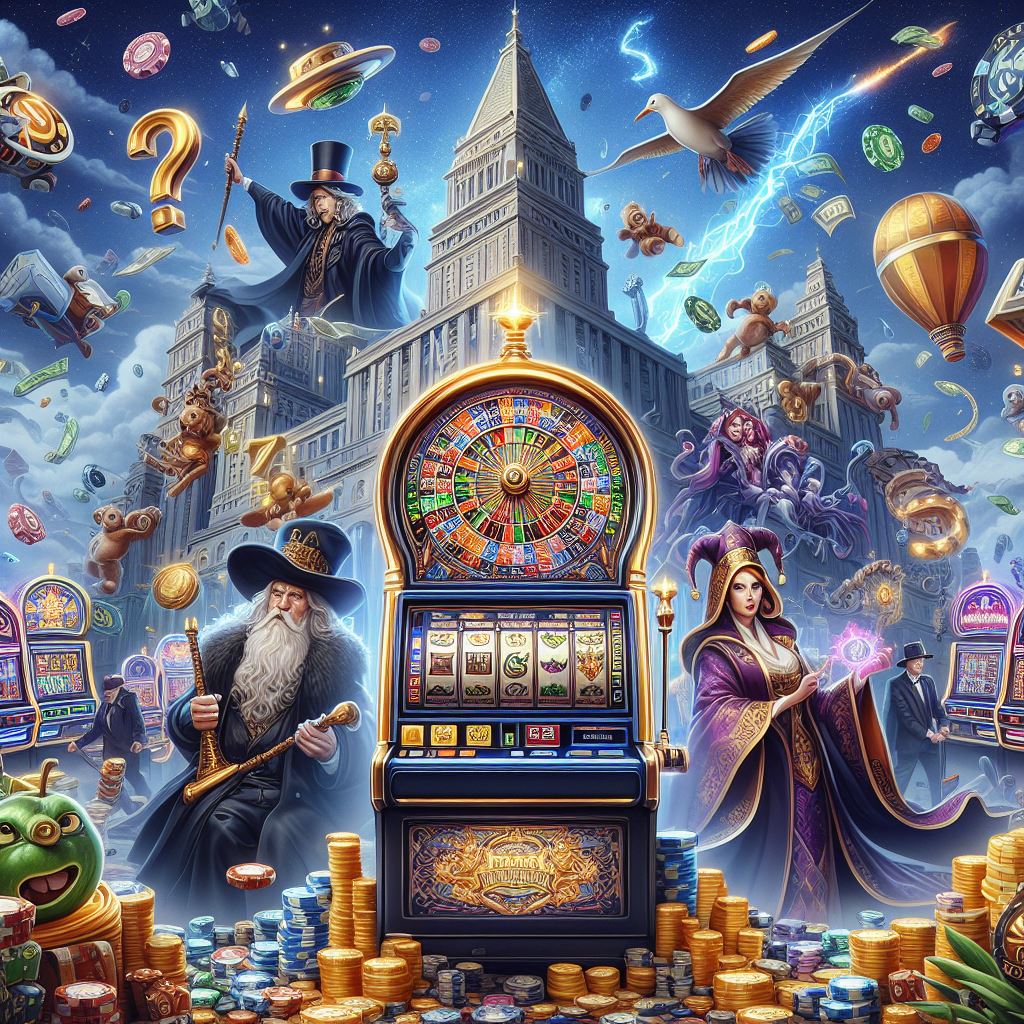Slot Online Mobile Terbaik merupakan judul pada artikel kami hari ini. kami ucap kan selamat datang di steveheimoff.com. Revealing the World of Gambling Through Words, Strategies, and Real Stories. pembahasan menarik tentang Slot online telah menjadi salah satu permainan kasino paling populer di dunia digital. Dengan kemajuan teknologi, kini Anda dapat menikmati slot online langsung …
Continue reading Slot Online Mobile Terbaik : Bermain di Mana Saja dan Kapan Saja
Turnamen Slot Pragmatic Play: Cara Berpartisipasi dan Menang
Turnamen Slot Pragmatic Play merupakan judul pada artikel kami hari ini. kami ucapkan selamat datang di steveheimoff.com. Revealing the World of Gambling Through Words, Strategies, and Real Stories Turnamen slot online telah menjadi salah satu fitur menarik yang ditawarkan oleh banyak kasino online, dan Pragmatic adalah salah satu penyedia yang paling aktif dalam mengadakan turnamen …
Continue reading Turnamen Slot Pragmatic Play: Cara Berpartisipasi dan Menang
Provider Cerdas Slot Online : Cara Dan Solusi Menang
Provider Cerdas Slot Online merupakan judul pada artikel kami hari hari ini. kami ucapkan selamat datang di steveheimoff.com. Revealing the World of Gambling Through Words, Strategies, and Real Stories. Pembahasan menarik tentang Slot online telah menjadi salah satu bentuk hiburan paling populer di dunia perjudian digital. Kunci kesuksesan dalam bermain slot online tidak hanya terletak …
Continue reading Provider Cerdas Slot Online : Cara Dan Solusi Menang
Tips Memilih Game Slot: Puncak Kemenangan Internasional
Tips Memilih Game Slot merupakan judul pada artikel kami hari ini. kami ucapkan selamat datang di steveheimoff.com Revealing the World of Gambling Through Words, Strategies, and Real Stories pembahasan menarik tentang Slot online adalah salah satu bentuk hiburan paling populer di dunia perjudian. Dengan ribuan permainan yang tersedia, memilih game slot yang tepat bisa menjadi …
Continue reading Tips Memilih Game Slot: Puncak Kemenangan Internasional
Pesona Indah Slot Online: Dari Grafik Hingga Bonus
Pesona Indah Slot Online merupakan artikel kami pada hari ini. kami ucapkan selamat datang di steveheimoff.com. Revealing the World of Gambling Through Words, Strategies, and Real Stories. Pembahasan menarik tentang Slot online telah menjadi salah satu permainan paling digemari di dunia perjudian digital. Keberhasilan ini bukan hanya karena kemudahan akses dan potensi kemenangan. Tetapi juga …
Continue reading Pesona Indah Slot Online: Dari Grafik Hingga Bonus
Slot Online Gratis Terbaik: Kelebihan dan Kekurangannya
Slot Online Gratis Terbaik merupakan judul pada artikel kami hari ini. Kami ucapkan selamat datang di steveheimoff.com Revealing the World of Gambling Through Words, Strategies, and Real Stories pembahasan menarik tentang Slot online gratis telah menjadi salah satu pilihan utama bagi pemain yang ingin merasakan sensasi bermain slot tanpa harus mempertaruhkan uang sungguhan. Mereka menawarkan …
Continue reading Slot Online Gratis Terbaik: Kelebihan dan Kekurangannya
Evolusi Cahaya Slot Online: Pencapaian hingga Virtual Reality
Evolusi Cahaya Slot Online merupakan judul pada artikel kami hari ini. Kami ucapkan selamat datang di steveheimoff.com. Revealing the World of Gambling Through Words, Strategies, and Real Stories. Industri perjudian online telah mengalami transformasi yang signifikan sejak awal kemunculannya. Dengan slot online menjadi salah satu segmen yang paling dinamis dan inovatif. Artikel ini akan menelusuri …
Continue reading Evolusi Cahaya Slot Online: Pencapaian hingga Virtual Reality
Menjelajahi Kedalaman Misterius dengan Slot Ocean Lord
Pengantar Menjelajahi Kedalaman Misterius judul pada artikel kami hari ini, kami ucapkan selamat datang di steveheimoff.com. Revealing the World of Gambling Through Words, Strategies, and Real Stories Slot Ocean Lord, yang tersedia di IDNSLOT, menawarkan petualangan bawah laut yang mendebarkan di mana pemain dapat menjelajahi misteri-misteri laut sambil mencari harta karun tersembunyi. Game ini menggabungkan …
Continue reading Menjelajahi Kedalaman Misterius dengan Slot Ocean Lord
Menaklukkan Mesin Slot Online: Panduan Praktis untuk Pemula
Menaklukkan Mesin Slot Online merupakan judul pada artikel kami hari ini. kami ucapkan selamat datang di steveheimoff.com Revealing the World of Gambling Through Words, Strategies, and Real Stories Bermain mesin slot online bisa menjadi pengalaman yang menyenangkan dan mengasyikkan, tetapi bagi pemula, bisa terasa menakutkan. Dengan begitu banyak variasi game dan strategi yang berbeda, bisa …
Continue reading Menaklukkan Mesin Slot Online: Panduan Praktis untuk Pemula
Tren Slot Online: Dapat Kita Harapkan
Tren Slot Online merupakan judul artikel kami hari ini. kami ucapkan selamat datang di steveheimoff.com. Revealing the World of Gambling Through Words, Strategies, and Real Stories pembahasn menarik tentang perkembangan teknologi yang terus menerus, industri slot online telah melihat banyak inovasi dan perubahan yang signifikan. Tren terkini dalam slot online tidak hanya meningkatkan cara permainan …
Continue reading Tren Slot Online: Dapat Kita Harapkan








